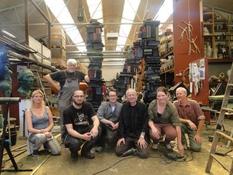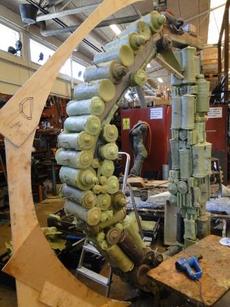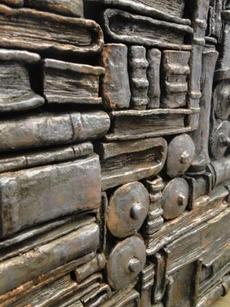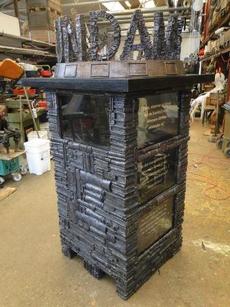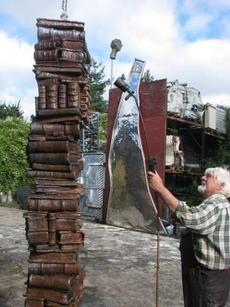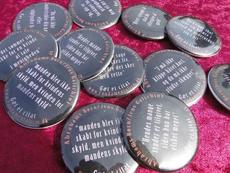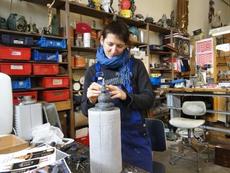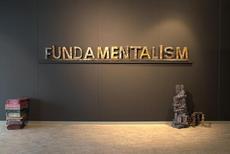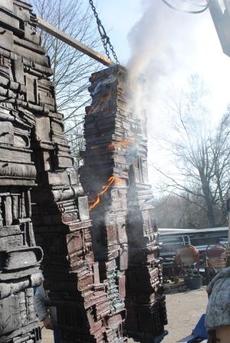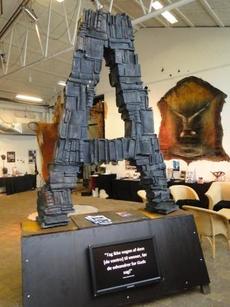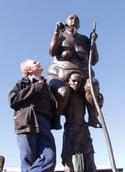|
Unsubscribe / Change Profile *** Forward this email to a friend *** Click here to view this email in your browser
1. Introduction to the project
2. Searching for museums and other exhibition-areas
3. Description of the sculpture ‘Fundamentalism’
4. Description of ‘The Children of Abraham’
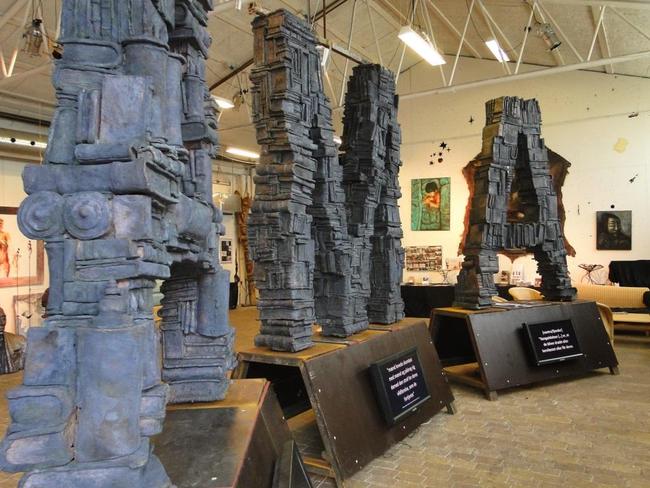 The sculpture "Fundamentalism" in Jens Galschiot's gallery in Odense (DK).
Information about the sculpture "Fundamentalism"
We are sending out this letter to you as we believe it may be of great interest to you as a religious organization. You should know that you are not registred in our mailing list but we will regurlarly inform you about the project. If you do not wish to receive these letters, we are sorry for the mistaken sending. You can unsubscribe at the link above.
At this very moment in one of Scandinavia’s largest art workshops the Danish sculptor Jens Galschiot and more than 20 assistants are creating the giant sculpture ‘Fundamentalism’. The sculpture is a part of the art project ‘The Children of Abraham’ which aims to create a dialogue about religious fundamentalism. The team is busy casting the 8,000 handmade copper models of Torahs, Bibles and Qurans that are a part of the project. The casted books will form a Stonehenge-like sculpture, which weighs 14 tons and consists of 4 meters tall letters which create the word ‘FUNDAMENTALISM’.
The sculpture will be revealed at the opening exhibition on January 17, 2015 at Art Centre Silkeborg Bad in Denmark. Afterwards it will be exhibited around Denmark and abroad.
28 flat screens, each casted into the plinth of the sculpture, recite 600 quotations from the Torah, the Bible and the Quran. The religious quotations are chosen by the artist, on basis of a thorough analysis of the religious pieces, and with the assistance from experts within the field. The quotations chosen are the 100 ‘brightest’ (i.e. humane, compassionate positions) from each book and the 100 ‘darkest’ (i.e. inhumane, cruel positions) from each book.
“I have worked concentrated for 4 years creating this enormous sculpture installation. I have named it “Fundamentalism”, and I want to use this piece of art to stage what I think is the essence of the three religions; Judaism, Christianity and Islam. This sculpture is meant to be a platform on which to start a balanced dialogue between people, who attach to the three religions culturally and religiously.” Says the artist Jens Galschiot.
We are looking for more art museums and other exhibition spaces to exhibit the sculpture installation. We would like the sculpture to be a part of a tour around in and outside of Europe. By doing so they take part in creating a dialogue about religion which is including and leads to a mutual understanding between the religions, unlike the present debate which is tearing the world apart. The grand ‘Fundamentalism’-sculpture can be exhibited outside and is secured against vandalism.
Bellow you will find a description of the project. Furthermore you can find a number of documents on our website http://fundamentalism.dk/en/ along with the quotations. Check it out - some of them are quite surprising.
Help us share information about the project and forward this mail.
Best regards
Lasse Markus - Info mail editor and leader of the secretariat of ’The Children of Abraham’
|
||
|
||
|
This mail has been sent from the sculptor Jens Galschiøt's workshop.
Contact to the workshop:
E-mail: aidoh@aidoh.dk
websider: To Gallery Galschiot To Galschot webside to "The Children of Abraham’projekt Overview over Galschiøt sculptures
Portrait of a sculptor Jens Galschiøt (PDF)
******************************************
******************************************
Subscrition and unsubscription of informations from Jens Galschiøt
If you want to be unsubscribed then click here: Unsubscribe
If you want to subscribe this infolist, then click here: Subscribe to Galschiøts infoliste
|
